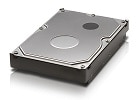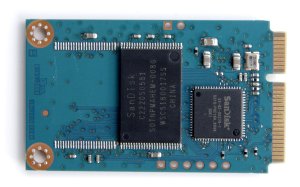-
1
×InformationNeed Windows 11 help?Check documents on compatibility, FAQs, upgrade information and available fixes.
Windows 11 Support Center. -
-
1
×InformationNeed Windows 11 help?Check documents on compatibility, FAQs, upgrade information and available fixes.
Windows 11 Support Center. -
- HP Community
- Archived Topics
- Desktops (Archived)
- Reinstalling Windows after hard drive failure ID 60EEK1-6SD8...

Create an account on the HP Community to personalize your profile and ask a question
03-14-2017 02:34 PM
The hard drive in my HP Envy Recline 27 is failing during reboot. First, I was getting Windows stop codes referring to FAT_FILE_SYSTEM and then it would reboot again the stop code would refer to NTSF_FILE_SYSTEM. I tried to "repair" it , but the message came back that nothing was able to be repaired. So then I ran diagnostics on the hard drives and they failed too. Here is the failure ID 60EEK1-6SD8HW-9XMNXF-60R303. Everything I read tells me that my hard drive is failing and I should back up any files that I don't want to lose. How am I supposed to do that when I can't get windows to boot up? I am buying 2 new hard drives, 16 GB SSD, and a 1TB SATA. These are duplicates of what was originally installed in my computer.
2 questions..
1) Any idea on backing up my files if windows won't boot?
2)Since my computer originally came with windows 8.1 and I upgraded to windows 10. How do I reinstall windows on these new drives. I don't have any media for windows 8.1 or 10.
Thank you in advance for your assistance.
03-14-2017 02:45 PM
> Everything I read tells me that my hard drive is failing and I should back up any files that I don't want to lose.
Agreed,
> How am I supposed to do that when I can't get windows to boot up?
Note that "booting" requires your disk-drive to correctly supply an exact sequence of files.
However, if the disk-drive is mounted as a "slave" disk-drive (meaning that you have booted from a brand-new disk-drive after installing Windows to it), it might be possible for the disk-drive to correctly supply ONLY the files in your 'Documents' and 'Pictures' and 'Music' and 'Bookmarks' folders -- that's a different group of files than those "required-at-boot" group.
> I am buying 2 new hard drives, 16 GB SSD, and a 1TB SATA.
> These are duplicates of what was originally installed in my computer.
Instead, I would buy a 64 GB SSD -- while you *might* be able to install Windows 10 onto a 16GB drive, many people in this forum have reported that the monthly Windows Updates have consumed "everything" on a 32GB SSD, such that Windows Updates fails to apply the latest updates. So, start with 64GB.
> my computer originally came with windows 8.1 and I upgraded to windows 10.
> How do I reinstall windows on these new drives. I don't have any media for windows 8.1 or 10.
Access: http://support.hp.com and enter your model-number.
It's possible that HP will offer to sell you a copy of the original Windows 8 that came "factory-installed".
Or, 'www.computersurgeons.com' may make the same offer.
Since you did have Windows 10 installed, you have a "digital entitlement" to reinstall Windows 10 on the same hardware (plus/minus the changed disk-drives).
See: https://www.microsoft.com/en-ca/software-download/windows10
to download Windows 10, and copy it to a 16GB (maybe less) USB memory-stick, or to "burn" it to a few DVD-recordable disks.
Move the media to your "dead" computer, connect the new disk-drives, and boot from the media to install Windows 10.
When asked to enter the 25-character product-key, click "I do not have one".
This will utilize your digital entitlement.
After installation, connect the "old" disk-drives as "slave" disk-drives, and try to copy from "old" to "new".
03-17-2017 10:16 AM
> You suggested a bigger SSD drive to avoid windows update problems.
Correct, under the assumption that Windows was installed on the 16GB "high-speed" device,
and the 1TB disk-drive is just "storage" for your files.
> I thought the OS was installed on the larger 1TB drive.
That's possible. Some HP computers are configured to use the 16GB SSD only as a "cache", to speed-up the computer, while the Operating System is installed on the 1TB disk-drive.
> If so, how is the SSD drive affect during windows updates?
If so, then it is actively used as a "cache" to speed-up the Windows Update process, but Windows Update is updating the files on the 1TB disk-drive.
03-17-2017 10:59 AM
Hi,
Can you give exact model of your Recline. Most come with only one hard drive which is a hybrid drive meaning it is a combination of small ssd (usually 8GB or more) with a larger mechanical drive (1TB). Are you sure you have two drives on your system.
For best perfromance I would install a large SSD, at least 250 GB where you can install OS and all applications which will greatly improve performance of your system.
To get windows 10 go to Microsoft site and download media creation tool on different computer. Once downloaded run the tool and follow instructions to create bootable usb pendrive (4GB) for installation on another computer. Remember to choose the same edition, language and version as the one installed on the computer which does not work, as only the same edition will automatically be activated.
Insert the pendrive in computer with new hard drives and go into BIOS, go to boot order and put the pendrive in first place and save settings. Now install windows 10 on computer.
Let me know if you need further help,
David
03-17-2017 11:07 AM
> Are you sure you have two drives on your system ?
Yes.
From: http://support.hp.com/ca-en/document/c03934951
Figure : Hard drive 
- Size: 1 TB
- Interface: SATA
- Rotational Speed: 5400 RPM
- Hard drive is 2.5 inches

- Size: 16 GB
- Interface: mSATA
------------------------------
So, I wonder if *BOTH* the "spinning" and the "SSD" devices have failed ?!
In other words, it may *NOT* be necessary to replace the SSD.
Did replacing the disk-drive "accidentally" create a RAID "set" ?
03-17-2017 11:27 AM
Hi,
Since there were two hard drives which wasn't clear without the exact model of PC but as mdklassen probably guessed correctly. There was probably already a raid setup with (Intel Rapid storage Technology) and once I assume the mechanical hard disk failed the whole system failed. I would check the two hard drives on different computer with usb hub or attaching to sata in desktop to see if they have actually failed. It would be really strange that they both failed at the same time.
You will also need to think aboput and adjust the intel rapid technology raid setup (where the small ssd works as cache) before reinstalling Windows 10.
Let me know if you need further help,
David
03-17-2017 12:16 PM - edited 03-17-2017 12:18 PM
> There was probably already a RAID setup
I disagree. I think that the *opposite* was true: the SSD was functioning only as a "cache", while the failed "spinning" disk-drive was the ONLY member of a RAID "set", because the BIOS is configured as 'AHCI-with-RAID', not just 'AHCI'.
> and once I assume the mechanical hard disk failed, the whole system failed.
It depends on the configuration of the RAID set.
If it was "RAID-1 (mirroring)", then a failure of one disk-drive in that set would NOT "fail" the whole system.
If it was "RAID-0 (striping)", then a failure of one disk-drive COULD lose all the data -- if the "striping" was spread over at least 3 disk-drives, it's possible that the failure of one disk-drive would not be "fatal".
> I would check the two hard drives on different computer ...
Given that the SSD is not the "usual" SATA interface -- it is 'mSATA' -- it might be difficult to attach it to a different computer. Instead, note that the SSD can be removed for "testing" -- the computer will run slightly more slowly without it. If the computer runs fine, reconnect the SSD, and test again.
> attaching to SATA in desktop to see if they have actually failed.
The SUBJECT line of this thread indicates that the failure has already been detected.
So, there's no need to confirm it by connecting the "spinning" disk-drive to another computer.
> It would be really strange that they both failed at the same time.
Yes, that's what I wrote.
The failed disk-drive probably was "partitioned" -- one partition was FAT-formatted, and one partition was NTFS-formatted, and the Windows reported problems with both the FAT and the NTFS file-systems, on the same disk-drive.
03-17-2017 12:43 PM
Hi,
I believe since Intel Rapid storage Technology comes as part of the PC the SSD yes was a cache disk, which is still RAID. It can perform the cache in two different ways. However it is still a raid system.
msata to usb:
https://www.amazon.com/s/ref=nb_sb_noss_1?url=search-alias%3Daps&field-keywords=msata+to+usb
>The SUBJECT line of this thread indicates that the failure has already been detected.
So, there's no need to confirm it by connecting the "spinning" disk-drive to another computer.
The thread started stating that both drives had failed, so you assume that only the spinning drive has failed without proof.
Hope it helps,
David
03-17-2017 01:10 PM - edited 03-17-2017 01:16 PM
> I believe since Intel Rapid storage Technology comes as part of the PC the SSD yes was a cache disk, which is still RAID.
I disagree (with the text in BOLD).
To create a RAID "set" is to logically combine multiple disk-drives", either for higher performance ("striping") or for redundancy ("mirroring").
Performance-wise, it makes no sense to "pair" a SSD device with a "spinning" disk-drive into a RAID set, because I/O transfer characteristics of the two devices are so different. What happens is that the speed of the set is reduced to the speed of the slower device -- a waste of the "high-speed" characteristic of the SSD, and the disabling of the use of the SSD as a high-speed "cache".
> It can perform the cache in two different ways.
This sentence makes no sense -- "caching" leverages a high-speed device for maximum performance of the computer.
> However it is still a RAID system.
That is EXACTLY the problem that the author has encountered -- the correct configuration should *NOT* use RAID.
Instead, 100% of the SSD should be allocated as the "cache" device, and 100% of the replacement "spinning" disk-drive should become the 'C:' partition, on which Windows is installed.
The solution is to "break" the RAID set. This will enable the SSD as a "cache".
Also, if the current RAID set is "mirroring", then "breaking" the set should NOT destroy any data on the "spinning" disk-drive.
> mSATA to USB adapter.
Rather than spending any money to buy this adapter, or spending to buy a replacement SSD, simply remove the SSD from the computer.
To repeat, the computer will run, slightly slower, without the SSD.
Install Windows on the replacement disk-drive, and test it.
Re-insert the SSD, and re-test it.
It is *VERY* *UNLIKELY* that a SSD will fail at all.
Also, it is *VERY* *UNLIKELY* that if both devices fail, that they will fail with the *SAME* error-code.
| Question | Author | Posted | |
|---|---|---|---|
| 05-05-2025 05:35 AM | |||
| 03-16-2025 02:33 PM | |||
| 02-18-2024 09:26 AM | |||
| 03-07-2025 11:17 AM | |||
| 09-26-2015 11:48 AM | |||

